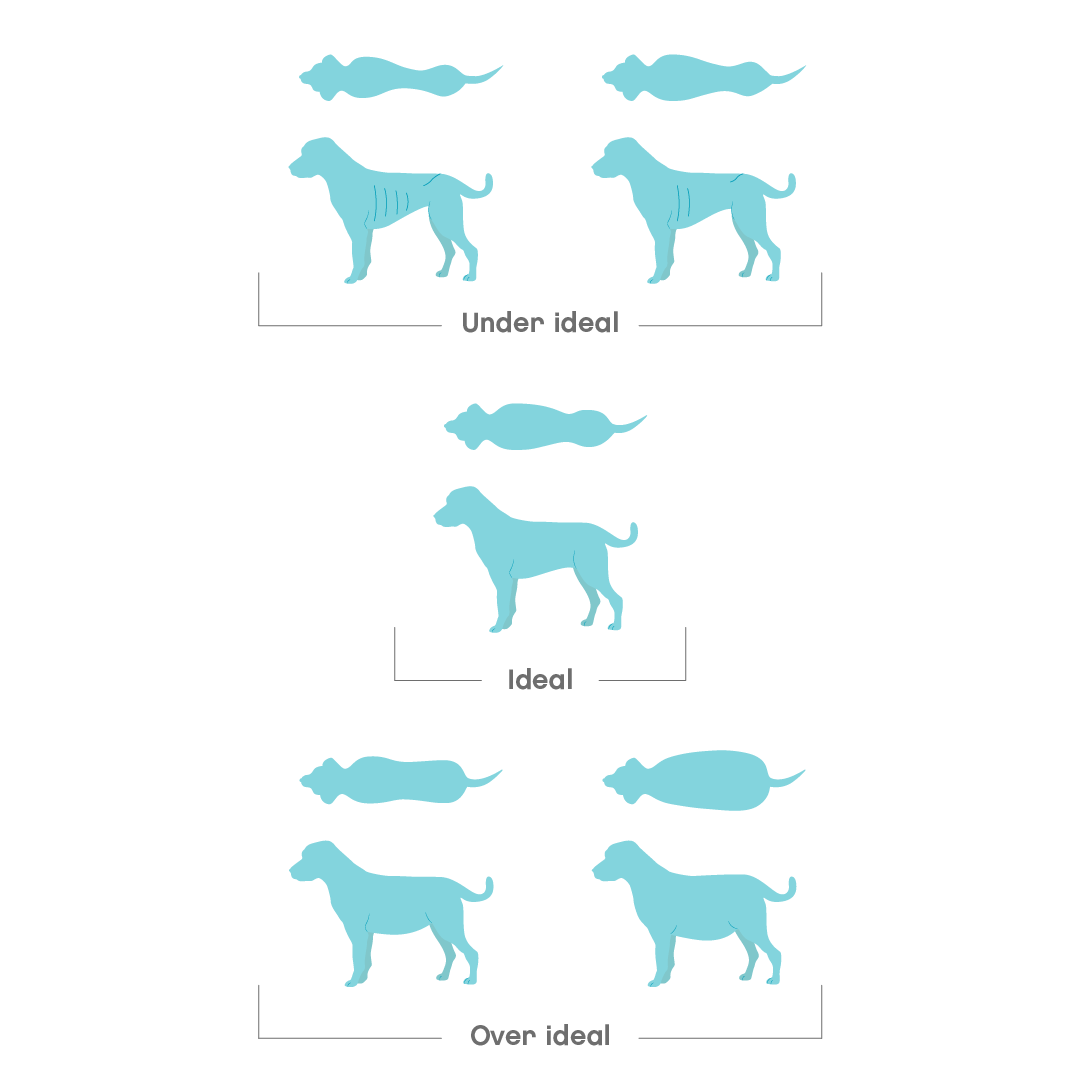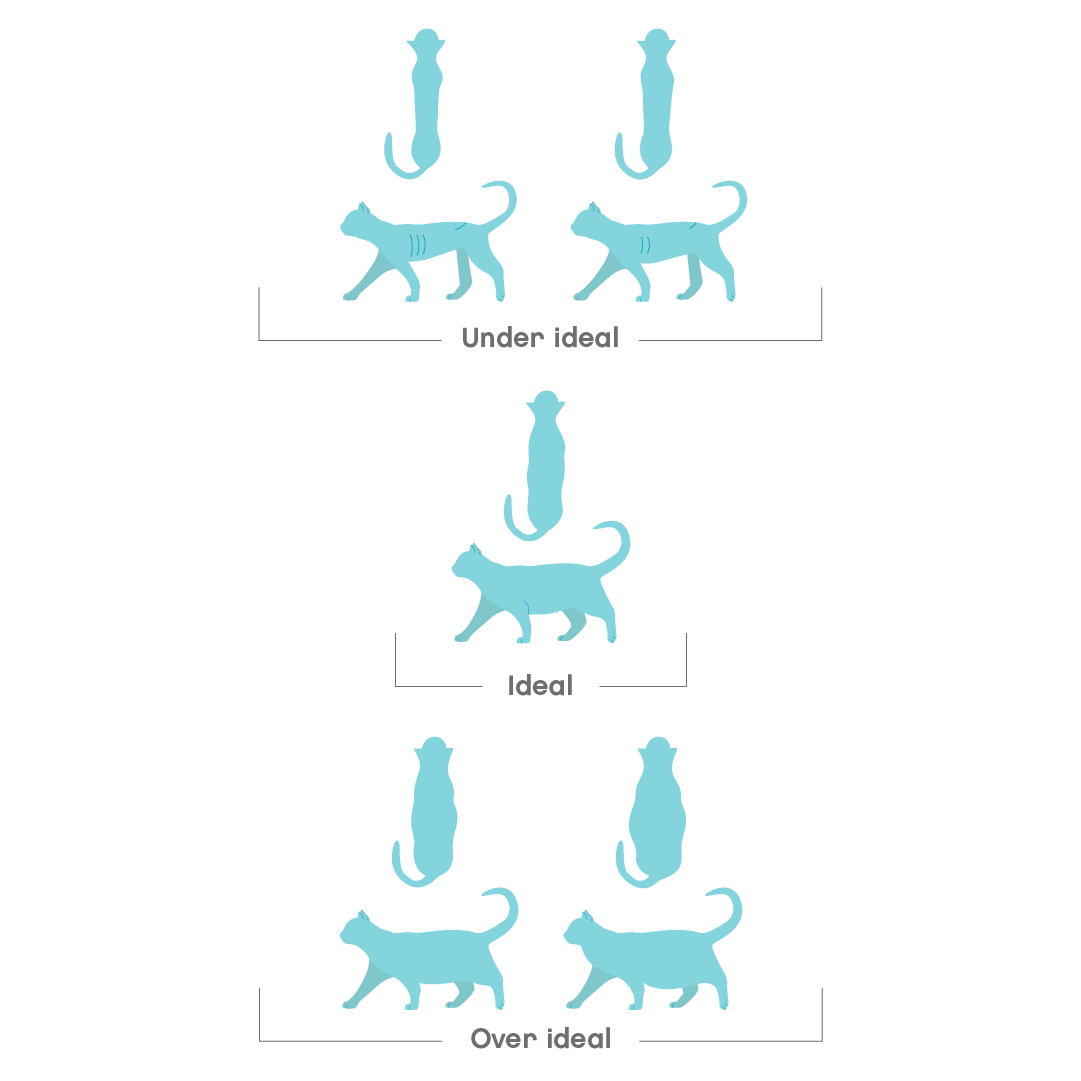There’s often a lot more going on than you realise when your dog or cat is examined by a veterinarian. Clinical exams serve as the frontline defence, allowing vets to catch and treat potential health issues before they escalate, ultimately providing our beloved pets with longer, healthier lives.
Clinical exams are important for both healthy animals (for example, when you bring your pet in for their vaccines) and unwell animals to determine if any further testing is needed. Routine clinical exams should be arranged at least once a year for healthy adult pets.
Taking a history: what’s worrying you and why?
A clinical exam will usually start with your vet asking a series of questions about your pet’s recent behaviour, their diet, energy levels and any abnormal symptoms such as vomiting or drinking more than usual.
This is a crucial part of the exam. Pets cannot tell us how or what they are feeling so the symptoms they are showing can give an indication of what may be going on.
Your vet may also use this time to look at your pet from afar to see if they are bright and alert or are looking subdued.
The physical exam: a head-to-toe check-over
The head: mouth, eyes, nose and ears
There’s a lot of information vets gain from checking your pet’s mouth, nose and eyes.
What are vets looking for in your pet’s mouth?
- Gum colour. The normal colour is salmon pink, though this can vary to slightly lighter pink. Pigmented (black) gums are normal too. White, dark red or yellow gums are a cause for concern.
- If the gums are dry and tacky, this can indicate dehydration.
- Abnormal growths or smells in your pet’s mouth, which can indicate dental disease or even kidney disease.
- Dental health: your vet will check for signs of gum and tooth disease.
- Capillary refill time: the time it takes for the gums to return to their normal colour after pressure is applied. This checks for issues with circulation.

Your pet’s nose will be checked for any discharge, asymmetry and swelling.
What checks are done for the eyes?
- Your vet will check for any discharges, clouding of the surface of the eyes, that the pupils are the same size and any abnormalities with the eyelids, conjunctiva and iris.
- If your pet is showing any signs of poor eye health, then your vet will likely use a special instrument to check the back of the eye.
Checking the skin and ears
Your pet’s ears are usually checked during a clinical exam for any redness, swelling or discharge. If your pet has been showing signs of ear disease, your vet may use an otoscope to look inside the ear canal.

Skin disease is extremely common in cats and dogs and can sometimes be linked to illnesses elsewhere in the body, such as Cushing’s disease or diabetes. During a check-up, your vet will examine several areas of your pet’s skin for signs of redness, rashes, hair loss and many other abnormalities.
Your vet will normally check the lymph nodes during this stage, which are small glands located in several areas of the body, including under the lower jaw and behind the knees. If larger than normal, these can indicate infection, allergies, or, sometimes, cancer.
Checking the chest
What do vets check with a stethoscope?
- Measuring the heart and breathing rates
- Checking for any heart murmurs or abnormal heart rhythms
- Checking the lungs for any abnormal sounds
Why is this important?
Heart murmurs can often be the first sign of an underlying disease, such as heart disease, anaemia or hyperthyroidism in cats. The heart and breathing rate are vital signs, which are measurements of the body’s basic functions. If abnormal, they can indicate your pet is unwell.
Testing the tummy: checking the abdomen
The next part of a clinical exam involves checking your pet’s tummy. The abdomen contains many important organs, such as the kidneys, liver, bladder, intestines and spleen.
Your vet will feel from the front to the back, checking for any abnormal swellings and growths, foreign objects or pain.
Your pet’s temperature will usually only be taken if they are showing signs of being unwell.
Checking the limbs and gait
The way your pet walks is called their gait. Assessing this can help vets gain information for the diagnosis of orthopaedic diseases, such as arthritis and neurological diseases.
Your vet will also check your pet’s limbs, from nails and pads up to the spine, for any abnormalities such as joint swelling, wounds, pain and muscle waste.
During the process of a clinical exam, your vet will also check your pet’s body condition score, a scale to determine if they are an ideal weight or not.
Body Condition Scoring (BCS) in dogs
Body Condition Score (BCS) is a scale that gives a practical evaluation of the fat coverage of your dogs body. By checking how easy or not it is to feel certain bony areas of the body, a score is then produced. There are several scales, from 1 to 5 or 1 to 9. The ideal body condition lies in the middle, so either 3/5 or 5/9.
The body areas normally checked for fat coverage are:
1. ribs and spine
2. hips and shoulders
3. waist

Here are a few tips on how to do it.
With your pet in a standing position:
- Place your hands on the rib cage and gently feel for each rib, without pressing too hard
- Feel the waist and look from the top and the side (if you have a very furry breed, it may be harder to assess)
- Feel the spine, which runs down the middle of the back
- Feel the top of the hips and shoulders
Body Condition Scoring (BCS) in cats
Body Condition Score (BCS) is a scale that gives a practical evaluation of the fat coverage of your cat’s body. By checking how easy or not it is to feel certain bony areas of the body, a score is then produced. There are several scales, from 1 to 5 or 1 to 9. The ideal body condition lies in the middle, so either 3/5 or 5/9.
The body areas normally checked for fat coverage are:
1. ribs and spine
2. hips and shoulders
3. waist

Here are a few tips on how to do it.
With your pet in a standing position:
- Place your hands on the rib cage and gently feel for each rib, without pressing too hard
- Feel the waist and look from the top and the side (if you have a very furry breed, it may be harder to assess)
- Feel the spine, which runs down the middle of the back
- Feel the top of the hips and shoulders
With all of these important functions to check, it may seem like this should take hours, but with the thorough training that vets undergo, it’s usually all done in 5 to 10 minutes.
While vets can gather a lot of information from a clinical examination, in many cases, further tests will be needed to diagnose conditions.
Further tests may include:
- Blood tests
- Urine tests
- Imaging, such as x-rays, ultrasound, CT and MRI
- Skin scrapes, fine needle aspiration, biopsies

What can vets check on a remote clinical exam?
As veterinary medicine gallops into the 21st century, pet care is undergoing a remarkable transformation. Today, clinical exams for pets go beyond the traditional stethoscope and thermometer, embracing cutting-edge technologies to ensure thorough health assessments.
And while not all diseases can be diagnosed or cured via telemedicine, it still plays an extremely important role in the industry.

What are some of the benefits of telemedicine?
- A reduced stress environment for pets, especially those who are anxious. Observing your pet in their normal surroundings can also lead to a more accurate assessment.
- It’s more accessible for pet owners. If transport is a concern, your vet is fully booked for the next week, or you are unable to leave your home, you can instantly connect to a vet on your device.
- Peace of mind: when it comes to the health of your furry companion, no question is unimportant. Pet owners can speak to a vet no matter what time of the day with any questions or concerns they may have.
- Cost-effective: being able to speak with experienced professionals who can provide more accurate information without having to take time off work and avoiding travel expenses.
- Emergency support for worried pet parents. Online vets can help confirm if your pet’s problem needs to be seen urgently or if it can be treated from home.
What can be checked on a remote exam?
- Gum colour and hydration status
- Breathing and occasionally heart rate
- Eyes, ears and skin
- Abnormal gait
- Tummy for any bloating
Common problems that can be supported via telemedicine include self-limiting vomiting and diarrhoea, minor skin issues, poison enquiries and behaviour issues.
Our Joii vets are available 24 hours a day, 365 days a year. If you have any questions about your pet’s health, download the app and call us now.











